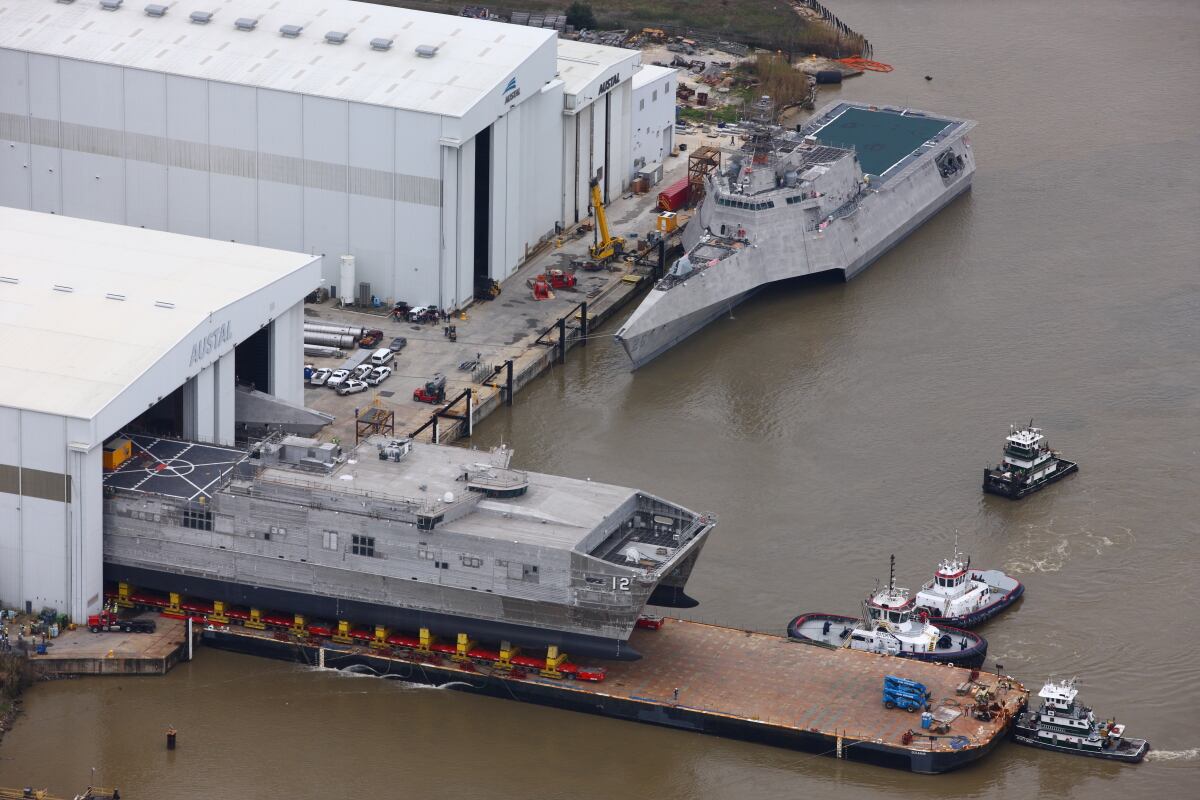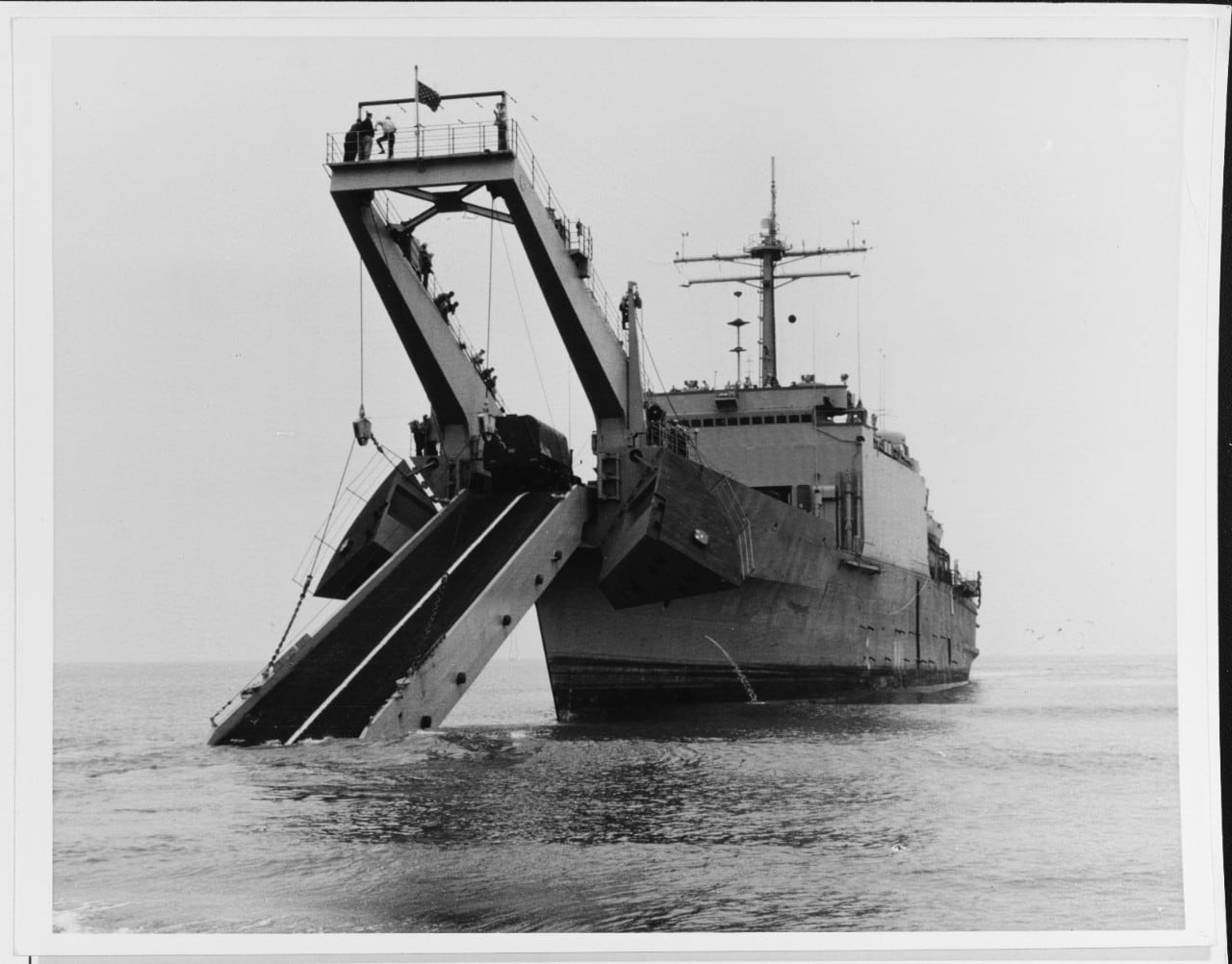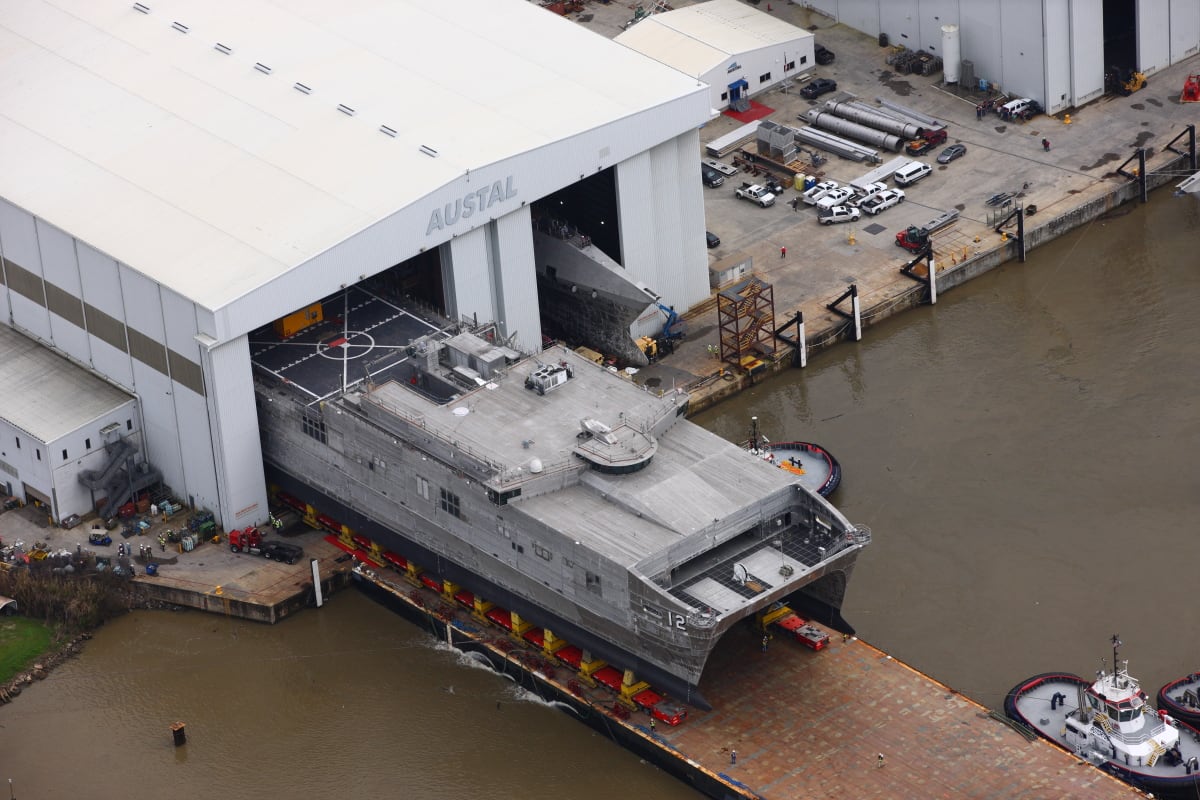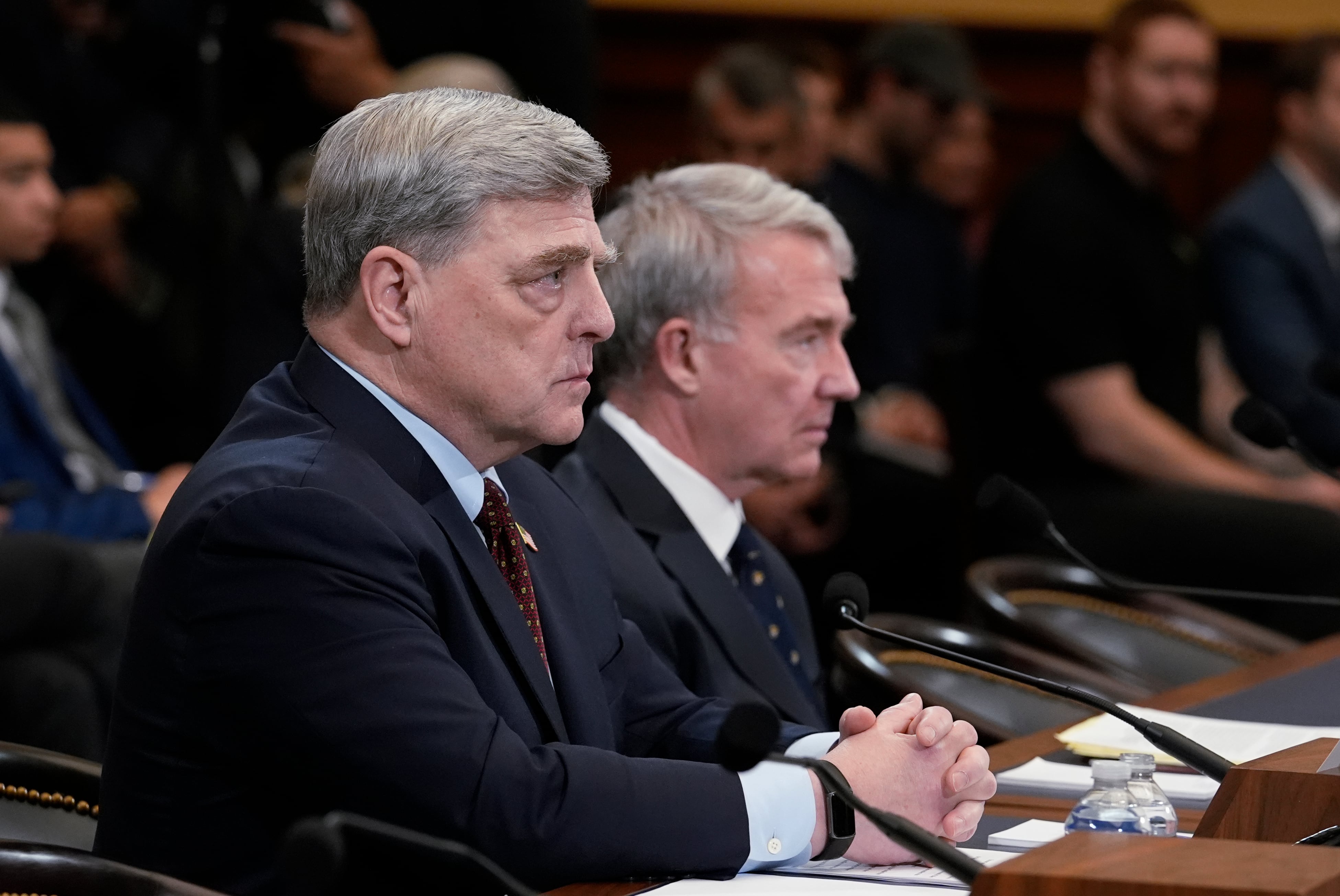Alabama shipbuilder Austal USA rolled and launched the future expeditionary fast transport Newport into the Mobile River on Friday, three months after the vessel was christened.
Tugboats guided it away from the future Independence-variant littoral combat ship Mobile, which was pierside nearby.
The transport now enters sea trials and is slated to be delivered to Military Sealift Command later in the year, Austal USA officials told Navy Times.
Navy officials did not respond to questions concerning when the Newport is scheduled for commissioning and where it will be homeported.

Based on commercial vessels and formerly named the joint high speed vessel, the aluminum expeditionary fast transport boasts a catamaran hull, water jet propulsion and a shallow draft to offload troops and materiel in damaged ports or along austere shorelines.
It’s designed to provide a middle capability between massive low-speed sealift and tiny high-speed airlift, delivering 600 short tons of military cargo — including a combat-loaded Abrams Main Battle Tank — from 1,200 nautical miles away at an average speed of 35 knots in Sea State 3.
It’s crewed by 26 civilian mariners and features berthing for 416 embarked troops, according to the Navy. It also has a flight deck to launch and recover a helicopter.
Austal USA is contracted to build 14 of the vessels and the future Newport is the twelfth to be launched. The next two under construction are the Apalachicola and Cody.
In a 2018 report, the Pentagon’s Inspector General noted key deficiencies in a program that already had netted $2 billion in Navy funding.
Investigators highlighted problems with the transport’s ability to move troops tactical units at high speeds and electronically communicating on secure networks to give and receive information.
IG asked whether the vessel could conduct vehicle transfers when waves were above a third of a meter, a condition normally found only in protected harbors.
That would make at-sea transfers from larger vessels difficult.
Officials also reported that the transport proved only that it could tote 600 short tons of materiel for 769 nautical miles at 31 knots, below the stated operational requirements for its class.
IG investigators pointed to potential cybersecurity vulnerabilities that could let hackers disable or take control of the vessel’s systems, too.
Program officials told IG they had resolved the problems.
Navy leaders agreed with IG’s concerns and pledged to demonstrate that all 28 deficiencies had been fixed.
Less than four months after the IG report’s April release, Austal USA’s expeditionary fast transport Burlington aced acceptance trials.

When commissioned, the Newport will become the fourth Navy vessel to bear the name of the Rhode Island city and county.
The first was a gunboat credited with helping to capture nine enemy vessels during the Spanish-American War.
Commissioned in 1944 during World War II and decommissioned 12 months later so it could be loaned to the Soviet Union, the second Newport was a Tacoma-class frigate. Returned to the U.S. in late 1949 and recommissioned in 1950, Newport screened the landings at Inchon during the Korean War.
Loaned to Japan in 1953, it was transferred permanently to the Japanese Maritime Self-Defense Force nine years later.
Commissioned in 1969, the third Newport was the lead vessel of its class of landing ship tanks.
It was decommissioned in late 1992 and transferred to Mexico nine years later and renamed the Papaloapan.

Prine came to Navy Times after stints at the San Diego Union-Tribune and Pittsburgh Tribune-Review. He served in the Marine Corps and the Pennsylvania Army National Guard. His awards include the Joseph Galloway Award for Distinguished Reporting on the military, a first prize from Investigative Reporters & Editors and the Combat Infantryman Badge.





